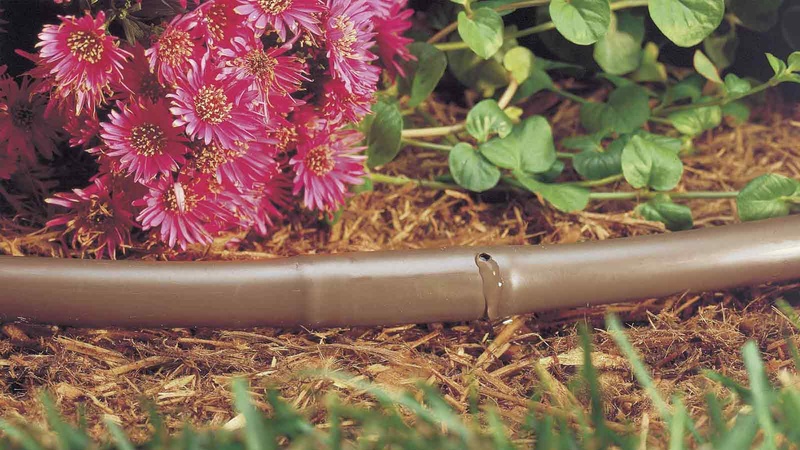
How to Save Money with Drip Irrigation
An economical and efficient method of watering your garden is with a drip irrigation system. This method is more than 90 percent efficient in allowing plants to get water. Other forms of irrigation like sprinklers have an efficiency rate of 65 to 75 percent. Drip irrigation reduces evaporation and runoff because the water is applied slowly at the root zone where it’s needed.
Until recently, this form of irrigation was more commonly used in agricultural and nursery applications, but homeowners are now starting to take advantage of its benefits and uses. You can use a drip irrigation system for your perennial and vegetable gardens, and to water shrubs and trees.
A drip irrigation system involves the placement of tubing and emitters alongside the plants on the ground. Water is slowly dripped into the soil at the root zone by the emitters – as seen in the illustration below.
Because the moisture level is kept at an optimal range, quality and productivity of plants improve.
A drip irrigation system also:
Prevents disease by reducing water contact with stems, leaves and fruit.
Allows the rows between plants to stay dry. This reduces weed growth and improves access.
Saves water, money, time and labor because the system is so efficient.
Enhances effectiveness on ground that’s uneven.
Decreases leaching of nutrients and water below the root zone.
You can set a drip irrigation system to run automatically like sprinklers, or you can control it manually. With manual operation, you can take advantage of rainfall before applying water unnecessarily. Since small amounts of water are slowly applied, drip irrigation runs every day, unless it rains.